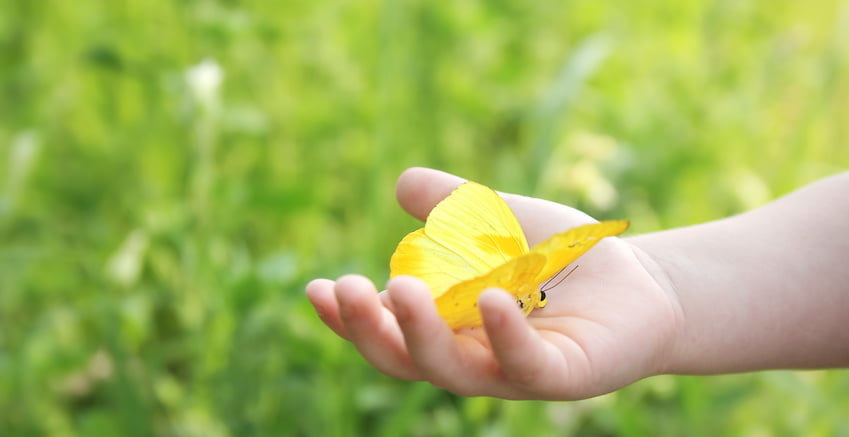A lot of the mindfulness exercises and games I do at home are activities that my older daughter actively engages in because of her age. My 2-year old participates as much as she is able to, but I think we need a couple of more years for her to really get a lot out of our planned activities. The other day, however, I realized that my 2-year old spends most of her day “practicing” mindfulness just by doing what she does best- exploring everything with intense curiosity and wonder.
We’ve started doing weekly walks right before her music class to just leisurely pass about thirty minutes we have together before her class begins. During our walks, my 2-year old stops every few seconds- observing, commenting, touching all the things she sees in her sight. She touches leaves, steps in puddles, pauses when she hears chirping birds. She looks up and down, and asks “what’s that mama?” at almost every step, when she sees simple things like wrappers and cigarette boxes. We don’t make it very far during our half-hour walk, but it doesn’t even matter- she has a blast. Everything is a new wonder to her and she seems genuinely intrigued to learn more.
I had forgotten how captivating a simple walk could be for a toddler and how quickly we lose that capacity to be curious about ordinary daily activities like walking. Even for my 5-year old, a simple walk is not as exciting as it is for my 2-year old, and the girls are only three years apart.
Observing my toddler on our walks, I realized that we practice mindfulness as we get older to try to return to our natural abilities to experience life with a childlike wonder. As we grow up from our toddler days, we quickly become conditioned to judge, to interpret, to execute, and through the constant repetition of daily patterns we lose sight of the newness of each moment.
Dr. Judson Brewer, a psychiatrist and leading expert on mindfulness, states that mindfulness practice is “about: dropping our preconceived notions or judgments of how something “always†is, and being curious about what is actually happening right now.” Brewer describes how there’s two ways to practice mindfulness: “force ourselves to concentrate, or be interested.” The former can be very challenging for some -namely because it can be boring. But if we are genuinely interested in each moment as we practice- curious about the smells, the sounds, the touch, about everything in that moment- we will “naturally be drawn in, effortlessly.” And Brewer states that if we become curious as we practice mindfulness, then we tap into an evolutionary mechanism we all rely on for survival- reward-based learning. “Curiosity…feels good – so curious attention has a natural reward,” and we will want to experience that feeling again. In this way, if we learn how to practice mindfulness with curiosity it will become enjoyable and “effortless” – much like our weekly walks are for my toddler. And perhaps then practicing mindfulness would feel like a new discovery each time instead of an actual practice. #MyChildrenAreMyGreatestTeachers




Share this: